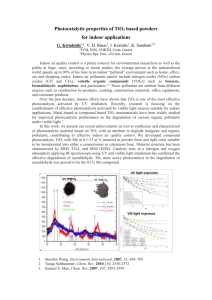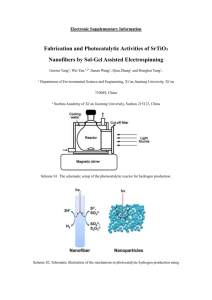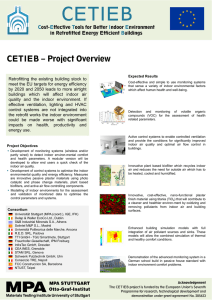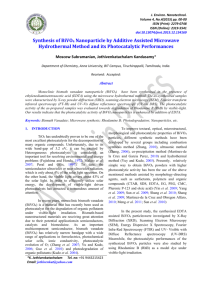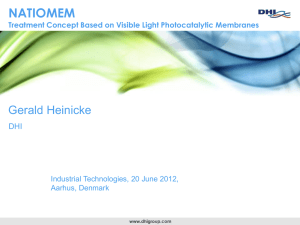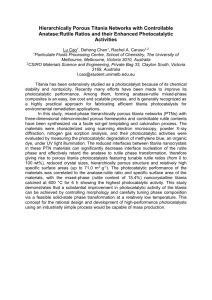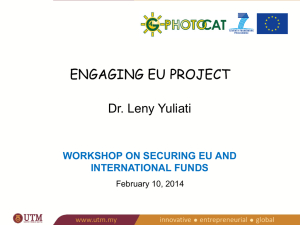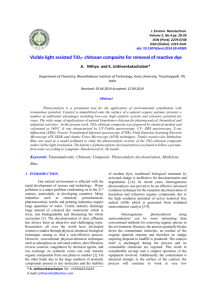Indoor Air quality Improvement by Photocatalytic Wallpaper
advertisement
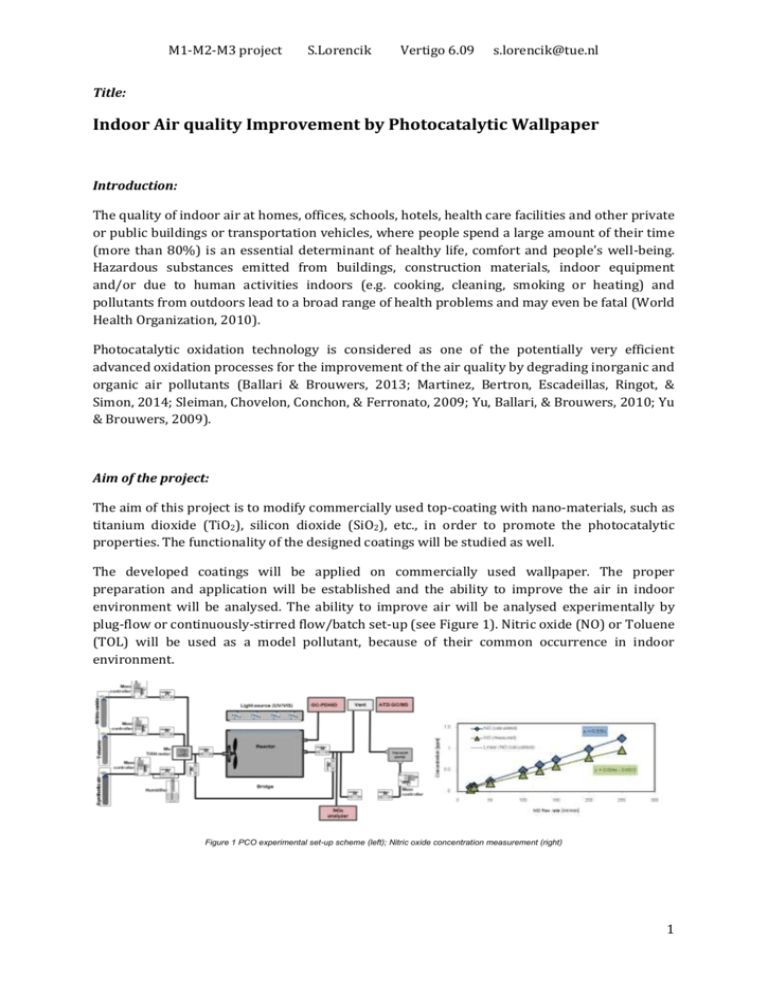
M1-M2-M3 project S.Lorencik Vertigo 6.09 s.lorencik@tue.nl Title: Indoor Air quality Improvement by Photocatalytic Wallpaper Introduction: The quality of indoor air at homes, offices, schools, hotels, health care facilities and other private or public buildings or transportation vehicles, where people spend a large amount of their time (more than 80%) is an essential determinant of healthy life, comfort and people’s well-being. Hazardous substances emitted from buildings, construction materials, indoor equipment and/or due to human activities indoors (e.g. cooking, cleaning, smoking or heating) and pollutants from outdoors lead to a broad range of health problems and may even be fatal (World Health Organization, 2010). Photocatalytic oxidation technology is considered as one of the potentially very efficient advanced oxidation processes for the improvement of the air quality by degrading inorganic and organic air pollutants (Ballari & Brouwers, 2013; Martinez, Bertron, Escadeillas, Ringot, & Simon, 2014; Sleiman, Chovelon, Conchon, & Ferronato, 2009; Yu, Ballari, & Brouwers, 2010; Yu & Brouwers, 2009). Aim of the project: The aim of this project is to modify commercially used top-coating with nano-materials, such as titanium dioxide (TiO2), silicon dioxide (SiO2), etc., in order to promote the photocatalytic properties. The functionality of the designed coatings will be studied as well. The developed coatings will be applied on commercially used wallpaper. The proper preparation and application will be established and the ability to improve the air in indoor environment will be analysed. The ability to improve air will be analysed experimentally by plug-flow or continuously-stirred flow/batch set-up (see Figure 1). Nitric oxide (NO) or Toluene (TOL) will be used as a model pollutant, because of their common occurrence in indoor environment. Figure 1 PCO experimental set-up scheme (left); Nitric oxide concentration measurement (right) 1 M1-M2-M3 project S.Lorencik Vertigo 6.09 s.lorencik@tue.nl Activities of the project: A. A brief literature study about photocatalysis, air quality, and building materials related to coating design; B. Setting up a research plan; C. Coating preparation (coating and wallpaper preparation; coating application and curing); D. Coating characterization (elemental analysis; morphology); E. Coating testing (photocatalytic tests with NO or TOL); F. Interpreting the test results; G. Reporting. References Ballari, M. M., & Brouwers, H. J. H. (2013). Full scale demonstration of air-purifying pavement. Journal of Hazardous Materials, 254, 406–414. Retrieved from http://www.sciencedirect.com/science/article/pii/S0304389413001210 Martinez, T., Bertron, A., Escadeillas, G., Ringot, E., & Simon, V. (2014). BTEX abatement by photocatalytic TiO2-bearing coatings applied to cement mortars. Building and Environment, 71, 186–192. doi:10.1016/j.buildenv.2013.10.004 Sleiman, M., Chovelon, J.-M., Conchon, P., & Ferronato, C. (2009). Photocatalytic oxidation of toluene at indoor air levels (ppbv): Towards a better assessment of conversion, reaction intermediates and mineralization. Applied Catalysis B: Environmental, 86, 159–165. doi:10.1016/j.apcatb.2008.08.003 World Health Organization. (2010). WHO guidelines for indoor air quality: selected pollutants. Bonn, Germany: in puncto druck+ medien GmbH (p. 484). doi:10.1186/2041-1480-2-S2-I1 Yu, Q. L., Ballari, M. M., & Brouwers, H. J. H. (2010). Indoor air purification using heterogeneous photocatalytic oxidation. Part II: Kinetic study. Applied Catalysis B: Environmental, 99(1-2), 58–65. doi:10.1016/j.apcatb.2010.05.032 Yu, Q. L., & Brouwers, H. J. H. (2009). Indoor air purification using heterogeneous photocatalytic oxidation. Part I: Experimental study. Applied Catalysis B: Environmental, 92, 454–461. doi:10.1016/j.apcatb.2009.09.004 2
